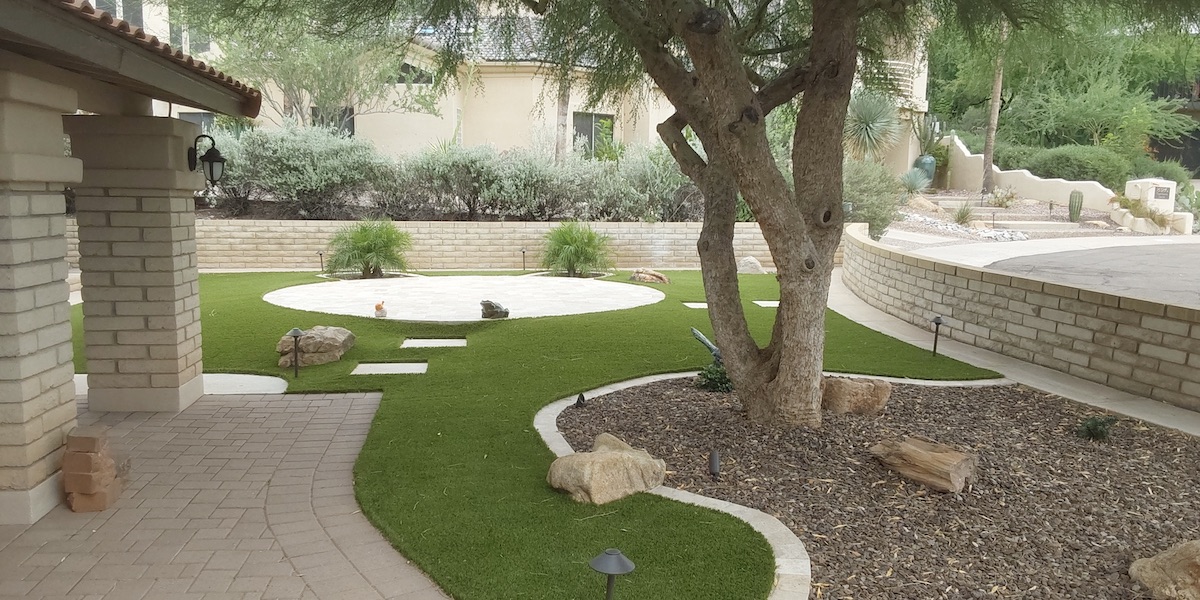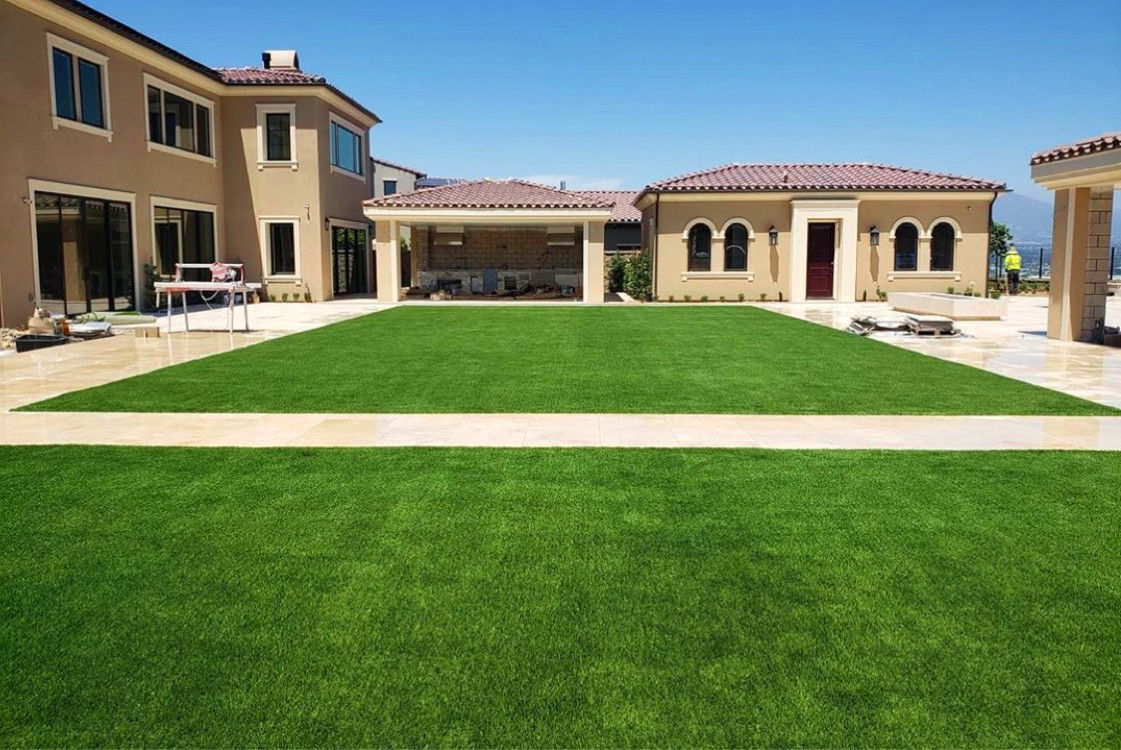Find the Best Artificial Grass for Your Canoga Park Property
Leading Reasons to Think About Artificial Grass for a Lush and Low-Maintenance Lawn
As house owners progressively look for lasting services for exterior spaces, artificial lawn provides an attractive alternative to typical yards. The advantages expand beyond mere aesthetic appeals and sustainability; discovering the complex effects of man-made turf exposes a comprehensive technique to lawn administration that merits deeper factor to consider.
Year-Round Plant
Among the most considerable advantages of fabricated lawn is its capacity to supply year-round greenery, no matter of climate problems. Homeowners frequently encounter obstacles in maintaining a lively lawn because of seasonal adjustments, dry spells, or heavy rains. Synthetic lawn removes these concerns, ensuring a continually lush appearance throughout the year.
This artificial alternative is crafted to stand up to diverse climate circumstances, from scorching summer warm to cold winter temperature levels. Unlike natural lawn, which may brownish or become patchy throughout extreme conditions, synthetic grass keeps its vibrant color and texture, enhancing the aesthetic allure of any type of landscape.
Furthermore, artificial grass is immune to bugs and conditions that generally influence natural lawns. This durability adds to its long-lasting elegance, as there is no demand for chemical therapies or plant foods that can be harmful to the atmosphere. Home owners can enjoy the aesthetic advantages of a well-maintained grass without the cyclical difficulties positioned by all-natural yard care.
Lowered Maintenance Efforts
Synthetic lawn considerably lowers upkeep initiatives, allowing house owners to delight in an excellent lawn without the lengthy tasks related to natural grass care. Among one of the most notable advantages of artificial lawn is the elimination of regular mowing. With no requirement for a lawnmower, homeowners save both time and the cost of upkeep related to this equipment.

Cleansing man-made lawn is simple; a straightforward rinse with a pipe or the periodic brushing to eliminate particles is generally sufficient - artificial grass. This ease of care enables homeowners to invest more time appreciating their exterior areas instead than struggling over them. In summary, the reduced maintenance initiatives connected with fabricated lawn make it an appealing option for those seeking a stunning, hassle-free yard
Water Preservation Conveniences
The considerable reduction in maintenance initiatives connected with synthetic lawn extends to water preservation, making it an eco pleasant choice for home owners. Traditional yards require considerable amounts of water to stay lively and lush, commonly bring about too much water use, particularly in deserts. In contrast, man-made lawn eliminates the demand for regular watering, drastically decreasing the total water usage in your yard.
By choosing for synthetic turf, homeowners can save hundreds of gallons of water annually. This shift not only advantages specific households but also adds to broader ecological efforts targeted at lowering water waste. In locations experiencing water deficiency, the fostering of man-made turf can play a significant function in minimizing the impacts of drought and guaranteeing that valuable water sources are utilized more efficiently.
Furthermore, the installation of man-made grass can help reduced municipal water demand, benefiting the area as a whole. With growing recognition of ecological issues, picking synthetic grass acts as an aggressive action in the direction of lasting landscaping, assisting to preserve natural water sources while advice keeping an aesthetically pleasing outdoor area (artificial grass installation). In recap, man-made lawn presents an engaging solution for water preservation, lining up ecological obligation with modern landscape design needs

Bug and Allergic Reaction Reduction
A significant benefit of setting up artificial lawn is its capability to lower bugs and irritants in exterior rooms. Typical yard yards typically serve as reproducing premises for bugs such as insects, ticks, and ants, which can create discomfort and health risks for family pets and family members. On the other hand, artificial turf gets rid of the organic material that attracts these bugs, thus considerably decreasing their populaces in your backyard.
In addition, all-natural lawn can harbor mold, pollen, and other allergens, which can activate allergies and respiratory system concerns for delicate individuals. Artificial turf provides a cleaner environment, lowering the potential for allergenic responses. Unlike all-natural turf, man-made lawn does not produce pollen, making it an exceptional alternative for allergy patients seeking to enjoy their exterior spaces without the risk of flare-ups.
Furthermore, the lack of soil in synthetic grass means there is less dust and dirt, more decreasing airborne irritants. This low-maintenance option not just enhances the aesthetic charm of your yard however additionally advertises a much healthier outside environment, allowing family members to appreciate their lawns without the consistent concern of insects and allergens. Hence, artificial lawn is a calculated selection for those focusing on convenience and health in their exterior space.
Long-Term Price Cost Savings
Spending in synthetic turf can lead to significant long-term price financial savings for home owners. Artificial lawn gets rid of the requirement for regular lawn maintenance costs, such blog here as mowing, feeding, and watering.
In addition, the long life of synthetic turf additionally enhances its cost-effectiveness. The majority of high-quality synthetic turf products can last 15 to 25 years with marginal maintenance, lowering the need for substitute or substantial repair services. On the other hand, all-natural grass might need frequent reseeding and routine treatment, which can promptly include up in expenses.
Utility savings are one more vital element. Home owners can expect to see lower water bills, as artificial lawn does not call for irrigation. Furthermore, the reduction in yard treatment solutions can maximize valuable time and sources, enabling home owners to allocate their budgets somewhere else.
Conclusion
In recap, synthetic grass offers various benefits for property owners looking for a lively and low-maintenance landscape. Its capability to offer year-round greenery, paired with minimized maintenance initiatives and substantial water conservation, makes it an enticing choice. Furthermore, the reduction of bugs and allergens adds to a healthier exterior environment. Eventually, the lasting price financial savings connected with synthetic grass solidify its standing as a sensible and lasting solution for improving outdoor rooms.
Synthetic turf considerably lowers maintenance initiatives, permitting property owners to delight in an excellent yard without the time-consuming jobs linked with natural yard care.The considerable decrease in maintenance initiatives associated with artificial turf prolongs to water conservation, making it an eco friendly choice for house owners. In contrast, fabricated yard removes the need for regular watering, considerably reducing the general water intake in your lawn.
In areas experiencing water deficiency, the adoption of artificial grass can play a considerable function in mitigating the impacts of dry spell and making sure that beneficial water sources are made use of much more successfully.
With growing understanding of environmental issues, choosing artificial grass offers as a positive step in the direction of sustainable landscape design, aiding useful site to maintain natural water sources while keeping a visually pleasing exterior room.